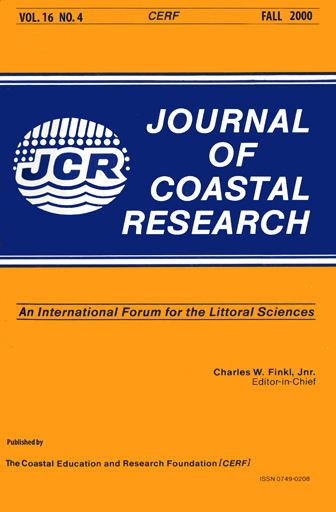The Relationship Between Incident Wave Energy and Seacliff Erosion Rates: San Diego County, California
Keywords:
Seacliff retreat, San Diego County, coastal hazards, wave erosion cliff materialsAbstract
The coastline of San Diego County, California, is characterized by steep seacliffs cut into 5 to 115 m high uplifted marine terraces. Over the past few decades, rapid population growth in the area has promoted a substantial increase in cliff-top development, despite a limited understanding of the long-term cliff erosion rates and their controlling factors. Wave erosion at the base of the seacliff is usually assumed to be a basic driving mechanism of coastal cliff retreat. We investigated the influence of waves on seacliff erosion by comparing high-resolution, long-term seacliff erosion rates to wave parameters (height, energy, and power or energy flux) in 10 m of water, the break-point, and at the cliff toe. Seacliff erosion rates range from 3.0 cm/yr in well-lithified Cretaceous sandstone to 43.0 cm/yr in unlithified Pleistocene sands. The wave parameters were calculated using the California Data Information Program (CDIP) Southern California Refraction-Diffraction Model (SCRDM), an empirical relationship for breaking wave height, and a new term we define as relative power at the cliff toe. Directional wave data from offshore South-Central California were used to initialize the model. The distribution of wave power in 10 m of water and at the breakpoint and cliff toe appears to be inversely related to historical seacliff erosion rates at our study sites. As a result, our findings suggest that waves, while an important mechanism of seacliff erosion, are secondary to material properties in the overall retreat of San Diego seacliffs. Along the San Diego coastline, material strength appears to largely determine seacliff stability and the rate and manner of retreat.


